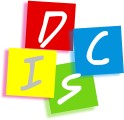The Ability to Chart a Course
 One of the skills necessary for success in any business or nonprofit organization is the ability to chart a course. To properly chart a course, it is important to understand first where you are, than where you want to go, and finally the plan on how to get there. If you have ever been in a new town and wanted to go out to dinner, you might have first looked for a restaurant in a magazine. You then call to find out where they were located. The first question you were asked by the person in the restaurant is where are you now? In fact, you have just taken the first step in charting a course to dinner.
One of the skills necessary for success in any business or nonprofit organization is the ability to chart a course. To properly chart a course, it is important to understand first where you are, than where you want to go, and finally the plan on how to get there. If you have ever been in a new town and wanted to go out to dinner, you might have first looked for a restaurant in a magazine. You then call to find out where they were located. The first question you were asked by the person in the restaurant is where are you now? In fact, you have just taken the first step in charting a course to dinner.
Where Are You Now?
Doesn’t that sound like a very simple question and one very easily answered? If you would ask that question to any business or organizational leader, you might expect an hour-long dialog on the current situation. It might include their sales or number of clients served. It would include their size and trends in the market or community. As we are initially introduced to a business leader, here are some of the points of conversation we use to discover where they are:
- In thinking about the history of the business, what have been some of you successes and failures?
- What have you learned from those successes and failures?
- What capacities do you have within your organization?
- How is your business different from others providing the same goods or services?
- Who are your key people and staff members? What are their strengths and what are their limitations?
- What additional strengths or skills do you see may be important to continued growth and success?
- As a leader, what are your strengths and limitations?
- On a scale from 1-10 how would you rank:
- Technical Skills
- Leadership
- Salesmanship
- Interpersonal Skills and Organizations Teamwork
- Employee Commitment
- What keeps you up at night?
Along with a discussion around questions such as these, we have learned to utilize several instruments that held provide an improved understanding of the current situation.
 In larger organizations, we recommend an instrument called D.I.AL.O.G (Data Indicating Alignment of Organizational Goals). It provides insight on how well critical elements of the organization are working together to achieve success. It may reveal that groups are more centered on the tasks with their individual groups or departments and not on the overall organization’s goals and success. This is commonly call the “silo effect”.
In larger organizations, we recommend an instrument called D.I.AL.O.G (Data Indicating Alignment of Organizational Goals). It provides insight on how well critical elements of the organization are working together to achieve success. It may reveal that groups are more centered on the tasks with their individual groups or departments and not on the overall organization’s goals and success. This is commonly call the “silo effect”.
In both large and small organizations, it is important to understand the personalities and attitudes of the key people. An organization’s future needs to be built upon the strengths and limitations of its people. The tools used are the Attribute Index, the Values Index, and the Disc Index. The Attribute Index reveals the strength of the priorities used in making decisions. The Values Index shows what values motivate the individual to perform at their best. The Disc Index provides insight into personality types and what could expect their interactions to be with others. All are information to understanding building a team for charting the path ahead.
Where you are now requires an opportunity to learn about your current situation. Using that opportunity provides for a more solid baseline to build upon.
Where Do You Want to Go?
Most small businesses and nonprofits start in something close to a survival mode. Businesses want to make a living, pay the bills and live on for another day. Charities and non-profits want to do good in the community and hope they will be supported by like-minded donors. But after this initial survival period, they begin to gain confidence and begin to question what is next. What is the end game? In a previous article Envisioning Success we referred to this as Visioning.
Visioning is where you want to go. The Vision Statement is the dream quest for the organization. It expresses what you want to become and possibly many aspects of what you are not now. The Vision should invoke passion within those on the team. The role of the leader is help to create a compelling vison and communicate it consistently throughout the organization. When a sports team starts their season their vision is to be the world champions. That’s the vision that compels them to develop plans and work hard on the execution of those plans.
The Plan on How to Get There
Our experience in talking to business and organizational leaders about planning is that all say that they have one. But upon discussion they will admit that it isn’t working and they may have given up on the idea. On several occasions we have been asked by leaders to discuss with them why a previously developed plan was not working. In a previous article Making Business Plans Work we discussed the three stages of planning; Development, Execution, and Monitoring Success. We also recommend the book by Larry Bossidy and Ram Charan, Execution, the Discipline of Getting Things Done .
A plan should be written and action plans establishe d. Just writing the plan down gives it importance and clarity. So many plans exist only in the leader’s head and are not effectively communicated to all involved. Action plans should also be written, with targeted completion dates and responsibilities. Who has committed to do what by what date? Action plans can be modified as experience is gained through implementation, but the goal should remain constant.
d. Just writing the plan down gives it importance and clarity. So many plans exist only in the leader’s head and are not effectively communicated to all involved. Action plans should also be written, with targeted completion dates and responsibilities. Who has committed to do what by what date? Action plans can be modified as experience is gained through implementation, but the goal should remain constant.
Progress against plans need to be reviewed on a regular basis. This provides accountability for those involved in the process. Too often the importance placed on achieving the goal is set aside to work on other unanticipated priorities. When this happens, the organization’s leadership needs to be in agreement with the need to change. If the plan was originally developed by a board of directors or an executive committee, they are responsible for approving the changes. In the case of a business owner the responsibility is theirs.
